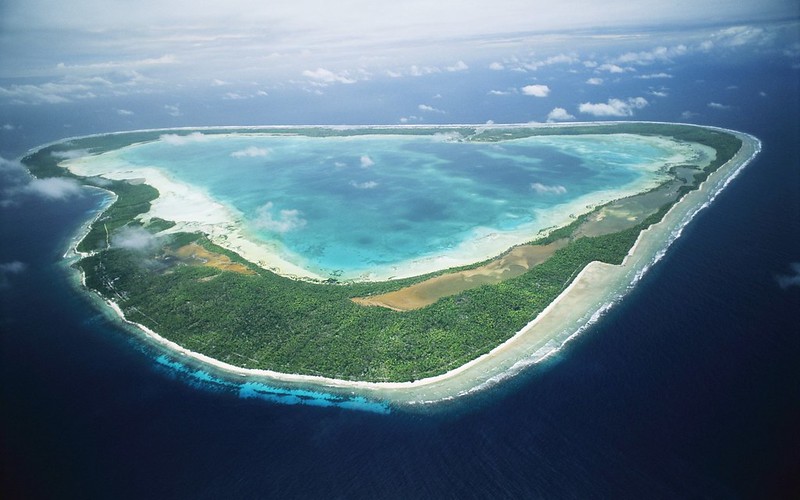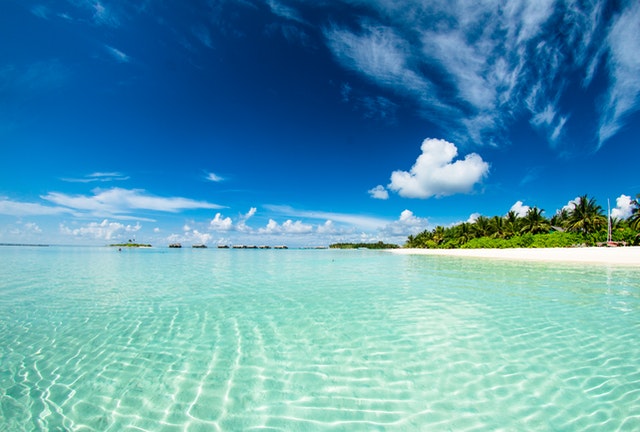Small islands may adapt naturally to rising seas
Even if islands can raise themselves above encroaching waves, humans still need to double down on protection for island populations.
I
n recent years, the leaders and inhabitants of many small-island nations like Kiribati and Tuvalu have warned that climate change is an existential threat to their homelands, fearing they could disappear under rising seas as the planet warms.
But according to research published on Wednesday, small, low-lying islands dotted around the Pacific and the Caribbean – often seen as the places most vulnerable to global warming – can naturally adapt and raise themselves above encroaching waves.
A three-year study led by Britain’s University of Plymouth, which looked at coral reef islands such as the Maldives and the Marshall Islands, found that tides move sediment to create higher elevation, a process that may keep the islands habitable.

Kiribati is predicted to be the first small-island nation to be swallowed up by rising seas. Photo by Charly W. Karl/ Flickr
“The dominant discourse is that of an island drowning, and the outcome of that is coastal defences and relocation … We think there are more trajectories for the islands,” said lead author Gerd Masselink, professor of coastal geomorphology at the University of Plymouth.
Low-lying island states are judged to be at greatest risk from increasingly powerful storms and rising oceans, with some making preparations to resettle their people within decades.
Many are already building sea walls, moving coastal villages to higher ground, appealing for international aid or setting up projects to repair damage caused by climate change impacts.
The world’s tens of thousands of coral reef islands are mostly uninhabited, but are home to about 1 million people who largely rely on fishing or tourism for a living, said Masselink.
Although the islands have different structures due to varying weather and wave patterns, they tend to be relatively small, low-lying, sandy or gravel islands sitting on top of a living reef platform.
They were formed hundreds of thousands of years ago by waves moving and piling up reef material or sediment to create higher ground – a natural defence mechanism that continues, he noted.

he study looked at island built off coral reefs, like the Maldives.
For the study published in the journal Science Advances, scientists built a model coral reef and island in a laboratory tank with rising water levels, and used computer simulations to replicate how such islands respond to higher seas in reality.
The results suggest that by opting for climate-resilient infrastructure that allows for occasional flooding, like buildings on stilts and movable houses, islanders with enough space could adapt to their shifting environment, Masselink said. Dredging coral sand and sediments found in island lagoons and moving it to beaches could also aid the natural process of raising the islands, he told the Thomson Reuters Foundation.
Sea walls, however, are compromising the natural ability of the islands to adjust to rising sea levels, he said.
“If you stop the flooding of the islands, you also stop the movement of the sediment on top of the island,” he said.
Most coral islands do not depend on agriculture, and import food and fresh water, making saltwater contamination during flooding less of an issue, he noted.
Hideki Kanamaru, natural resources officer with the U.N. Food and Agriculture Organization in Asia-Pacific, said the study provided a “new perspective” on how island nations could tackle the challenge of sea-level rise.
But even if islands can adapt naturally to higher seas by raising their own crests, humans still need to double down on global warming and protection for island populations, he added.
The ideas presented in this article aim to inspire adaptation action – they are the views of the author and do not necessarily reflect those of the Global Center on Adaptation.